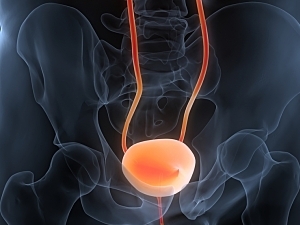Intravesical therapy for bladder disorders provides a higher concentration of drug in the bladder than oral or intravenous administration, and it minimizes systemic toxicity. However, intravesical drug instillation requires repeated catheter placement, which is uncomfortable and inconvenient, and patients often experience side effects such as pain, hematuria, and infection.
Implantable devices for drug delivery to the bladder show promise, but they require surgical implantation and removal. Scientists at Brigham and Women’s Hospital have invented a biodegradable ring-shaped implantable device (BRID) for long-term and local drug delivery inside the bladder that does not require a retrieval procedure. Giovanni Traverso, MD, PhD, MBBCH, a gastroenterologist in the Division of Gastroenterology, Hepatology and Endoscopy at the Brigham and MIT, Hyunjoon Kim, PhD, and Seung Ho Lee, PhD, of MIT, and colleagues describe the device in Biomaterials.
Device Design
Key features of the BRID are that:
- Biodegradable polycaprolactone microcapsules, which serve as drug containers, are connected by bioabsorbable sutures in series with a magnet at each end
- Because it initially has a linear shape, the BRID can be packed easily into a 16-Fr catheter (the most commonly used size in the urology clinic) for minimally invasive implantation into the bladder via the urethra
- After insertion of the device, an external magnet is applied from outside the body, and the magnets from the ends of the device attach to each other and form a ring, preventing clearance from the bladder during urination
- The drug release rate is modulated by a rate-controlling orifice in each microcapsule
- Judged from the medical literature on kidney stones, each microcapsule is small enough (<5 mm) to pass easily through the urethra after the suture biodegrades
Safety and Efficacy in Animal Model
In swine, which have urinary tract anatomy similar to that of humans, the researchers observed that a straight shape of the BRID was immediately deployed after catheter insertion. A ring shape was formed after the external magnet was applied.
Safe long-term retention of the BRID in the bladder was confirmed by serial radiographs over one month, and there were no apparent changes in the animals’ urinary behaviors.
Each microcapsule separated from its suture, and all of them passed through the urethra without causing any clinical signs. Single microcapsules were rapidly excreted within 48 hours.
In separate experiments, the BRID demonstrated prolonged release of lidocaine and resiquimod at steady levels.
Potential Adjustments
Intravesical therapy could be optimized with the BRID in several ways:
- The BRID could be applied to other drugs that require long-term sustained release. For instance, it could be loaded with a chemotherapeutic to target any small residual tumors after transurethral resection of bladder tumors
- The drug release rate can be fine-tuned to the desired dosage regimen by adjusting the orifice dimension and the number of microcapsules
- Depending on the bladder disorder being treated and the physiology of the patient’s bladder, the microcapsules and sutures could be manufactured from other biodegradable polymers, such as polylactic acid, polyglycolic acid, or zinc/magnesium alloy
- The microcapsules could be loaded with different drugs to permit combination drug therapy
